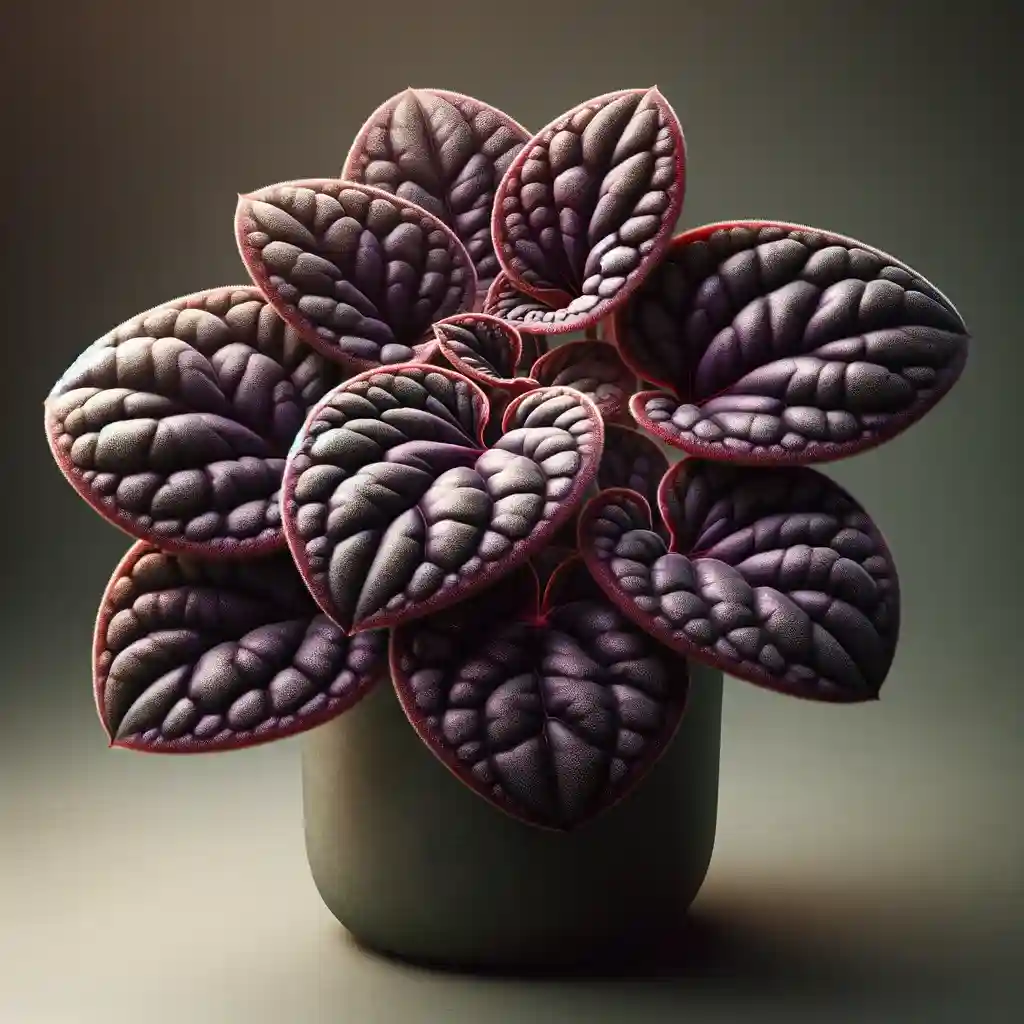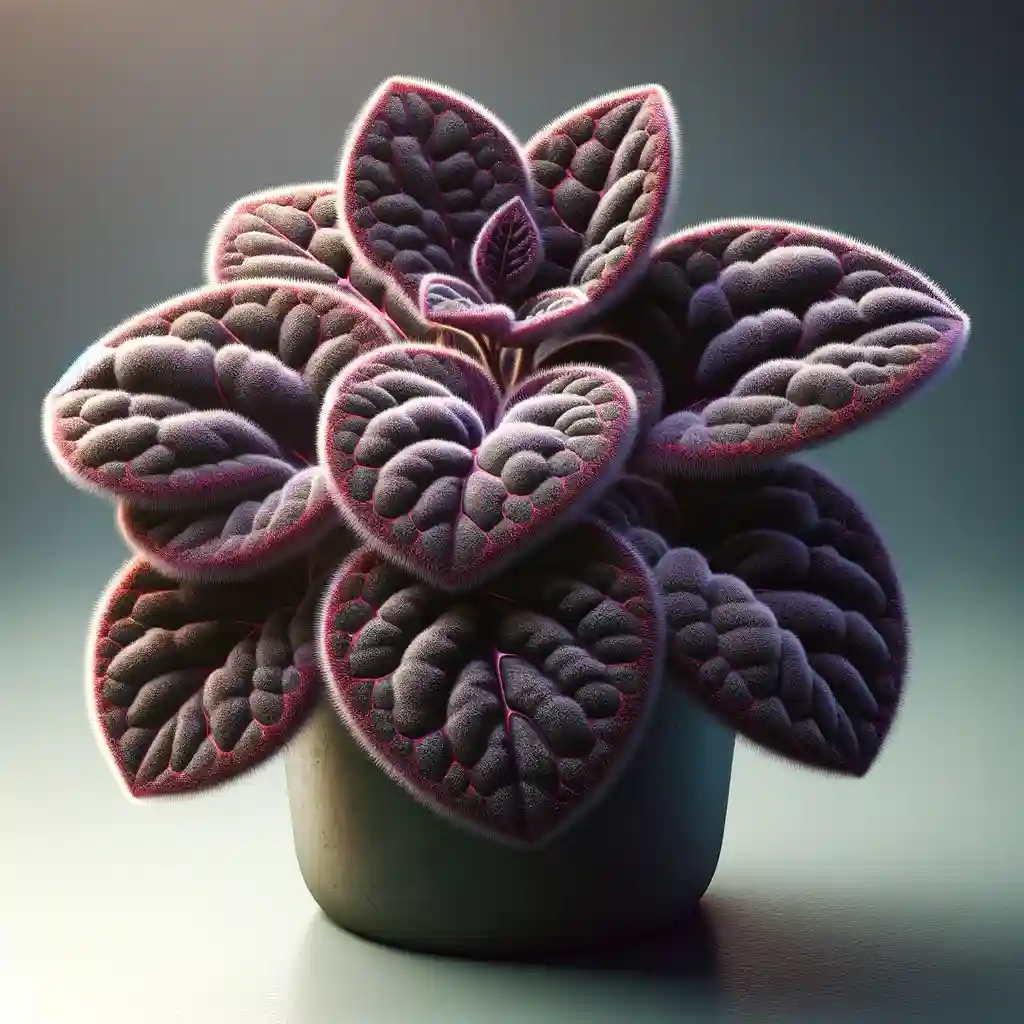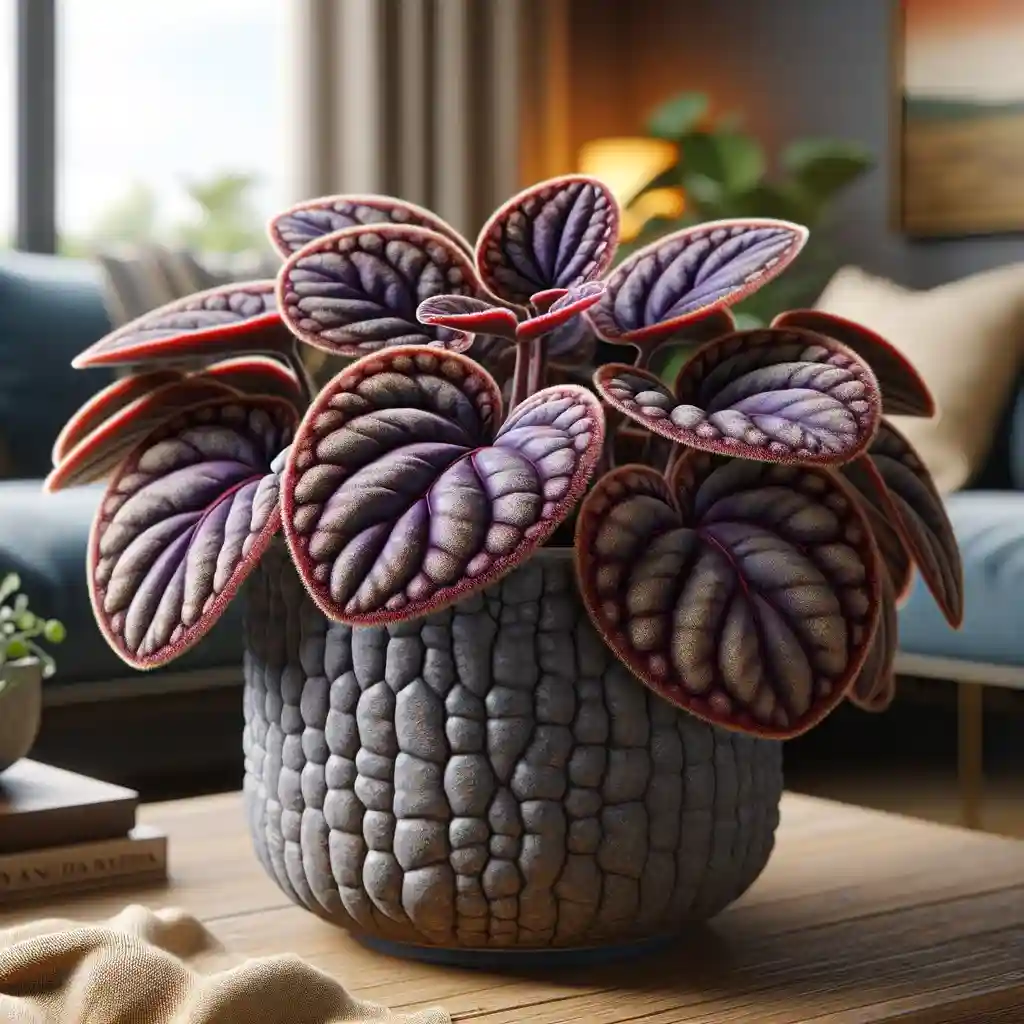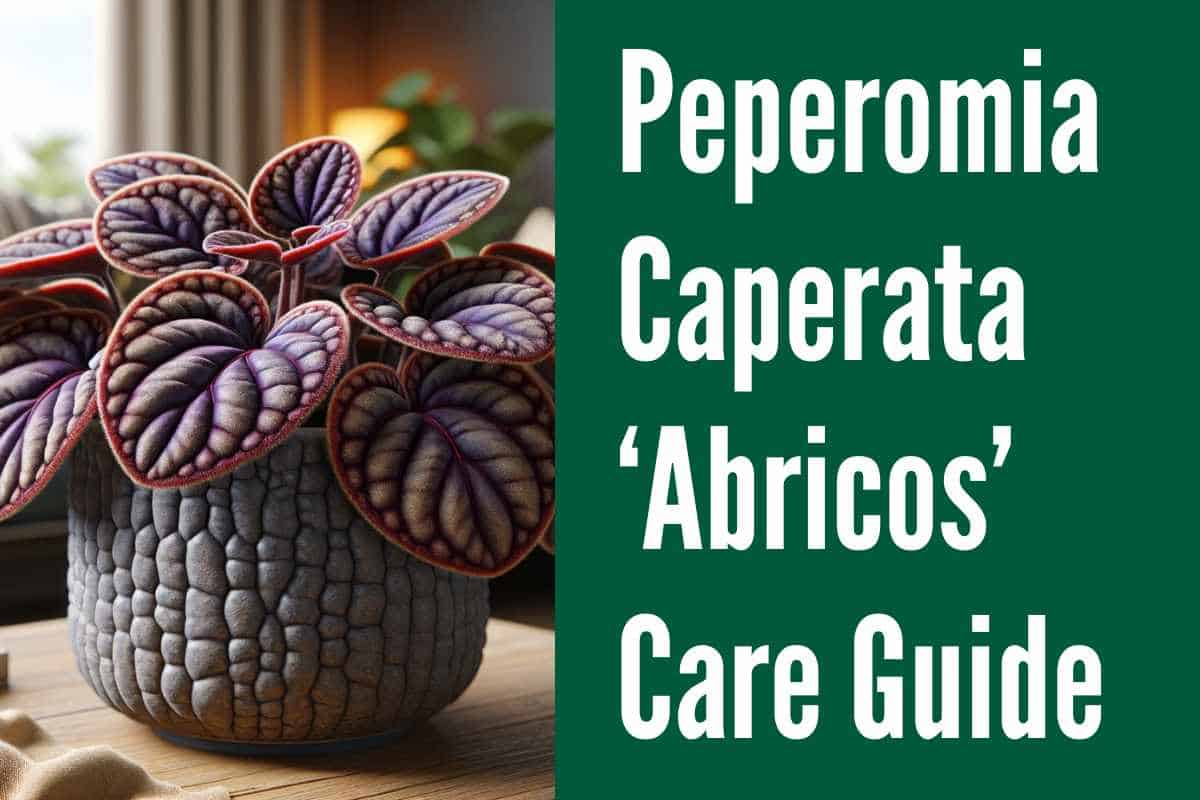Greetings, fellow plant enthusiasts! Today, I want to share with you the essential Peperomia Abricos care tips. This charming plant, also known as Peperomia Caperata ‘Abricos’, boasts beautiful heart-shaped leaves in shades ranging from dark green to burgundy.
Not only is it a stunning addition to any indoor space, but it’s also an easy-to-care-for plant that’s perfect for both beginners and experienced growers.
Proper care is crucial for the healthy growth of your Peperomia Abricos. By providing the right amount of light, water, temperature, and attention, you can ensure that this plant thrives and graces your home with its vibrant foliage. So, let’s dive into the care essentials for your Peperomia Abricos!
Key Takeaways:
- Peperomia Abricos is an easy and low-maintenance houseplant, suitable for beginners and experienced growers.
- Place your Peperomia abricos in medium to bright indirect light, avoiding direct sunlight.
- Water your plant when the top inch of soil feels dry, allowing the soil to partially dry between waterings to prevent root rot.
- Maintain a temperature above 65°F (18°C) and humidity levels around 50-60% for optimal growth.
- Use a well-draining potting mix, repotting every one to two years or when the plant outgrows its pot.

See Also:
Light Requirements for Peperomia Abricos
When it comes to the light requirements of Peperomia Abricos care, this beautiful plant thrives in medium to bright indirect light. While it can tolerate low light conditions, it will grow slower and become more leggy.
It’s important to avoid placing it in direct sunlight as the leaves can get burned. For optimal light exposure, consider placing the plant in a partially shaded location indoors or in a window facing east or west. This way, it will receive the right amount of light without being exposed to intense rays.
By providing the right light conditions, you’ll ensure the healthy growth and vibrant appearance of your Peperomia Abricos. With its deeply ridged, heart-shaped leaves in shades of dark green to burgundy, this plant will truly shine when given the right amount of light.
Light Requirements for Peperomia Abricos – Summary:
- Thrives in medium to bright indirect light
- Avoid direct sunlight to prevent leaf burn
- Place in a partially shaded location or window facing east or west
| Light Requirements | Description |
|---|---|
| Medium to Bright Indirect Light | Peperomia Abricos thrives in this light range, which ensures optimal growth and vibrant foliage. |
| Avoid Direct Sunlight | Direct sunlight can burn the leaves of Peperomia Abricos, so it’s best to keep it in a location with partial shade. |
| Partially Shaded Location | Placing the plant in a partially shaded area indoors or a window facing east or west provides the right amount of light for healthy growth. |

Watering Needs for Peperomia Abricos Care
Proper watering is crucial for the healthy growth and well-being of Peperomia Abricos. As with any houseplant, finding the right balance is key to avoid overwatering or underwatering. The frequency of watering depends on various factors, including the season, temperature, humidity, and the size of the pot.
As a general rule, water your Peperomia Abricos when the top inch of soil feels dry to the touch. This indicates that the plant is ready for watering. It’s important to avoid letting the soil become completely dry or waterlogged. Overwatering can lead to root rot, while underwatering can cause the leaves to wilt and drop.
During the summer months when the plant is actively growing, you may need to water more frequently, about once a week or whenever the topsoil feels dry. In contrast, during the fall and winter when the plant goes into dormancy, reduce the frequency of watering to prevent waterlogged soil and promote healthier root development.
Signs of Proper Watering:
- The soil feels slightly moist but not soggy
- The leaves are plump and firm
- The plant shows consistent, healthy growth
Signs of Overwatering:
- Yellowing or drooping leaves
- Rotted or mushy roots
- Foul smell coming from the soil
Signs of Underwatering:
- Wilting or crispy leaves
- Dry and parched soil
- Stunted growth
Table: Watering Guide for Peperomia Abricos
| Season | Watering Frequency |
|---|---|
| Spring/Summer | About once a week or when the top inch of soil is dry |
| Fall/Winter | Reduce frequency to every 2-3 weeks or when the topsoil is dry |
By monitoring the soil moisture and responding to the plant’s needs, you can ensure that your Peperomia Abricos thrives and remains healthy. Remember to always use well-draining soil and a pot with drainage holes to avoid waterlogged conditions. Happy watering!

Temperature and Humidity for Peperomia Abricos Care
I absolutely love my Peperomia Abricos plant, and one of the reasons it’s thriving so well is because I provide it with the right temperature and humidity conditions.
Peperomia Abricos prefers warm temperatures, so I make sure to keep it in an environment that is above 50-60 degrees Fahrenheit (10-15 degrees Celsius). This ensures that the plant is comfortable and able to grow healthily.
Another important factor for the well-being of my Peperomia Abricos is maintaining average to high humidity levels. I try to keep the humidity around 50-60% to create the perfect environment for the plant. This can be achieved by misting the leaves regularly or placing a tray of water near the plant to increase humidity.
Why is temperature and humidity important for Peperomia Abricos?
Peperomia Abricos is native to tropical regions, so it naturally thrives in warm and humid environments. Providing the plant with the right temperature and humidity levels helps mimic its natural habitat and promotes healthy growth. It also helps prevent issues such as drying out, leaf browning, and stunted growth.
Table: Ideal Temperature and Humidity Levels for Peperomia Abricos care
| Plant Stage | Ideal Temperature | Ideal Humidity |
|---|---|---|
| Active Growth | Above 65 degrees Fahrenheit (18 degrees Celsius) | Around 50-60% |
| Winter Dormancy | Above 60 degrees Fahrenheit (15 degrees Celsius) | Around 40-50% |
Providing the right temperature and humidity for your Peperomia Abricos will ensure that it remains happy and healthy. Remember to monitor these conditions regularly and make any necessary adjustments to create the optimal growing environment for your plant.
Soil Requirements for Peperomia Abricos Care
When it comes to the soil requirements for Peperomia Abricos, it’s important to provide a well-draining medium that mimics its natural habitat.
A loamy potting mix is ideal for this plant, which combines indoor potting soil with perlite or sand to improve drainage. This ensures that excess water can easily escape, preventing the risk of root rot.
It’s crucial to keep the soil consistently moist but not waterlogged. Allow the top inch of soil to partially dry between waterings to prevent overwatering. Remember, Peperomia Abricos prefers moderate moisture levels, so striking the right balance is key.
Finding the Best Soil for Peperomia Abricos
When looking for the best soil for Peperomia Abricos care, keep in mind its preference for a well-draining loamy mix. You can create your own potting mix by combining equal parts indoor potting soil, perlite, and sand. Alternatively, you can purchase a pre-made well-draining mix specifically designed for tropical plants.
Overall, providing the right soil conditions is essential for the healthy growth of Peperomia Abricos. A well-draining medium will prevent waterlogged roots and ensure that the plant receives the necessary nutrients for optimal growth and vibrant foliage.
| Soil Requirements for Peperomia Abricos | Summary |
|---|---|
| Soil Type | Loamy potting mix |
| Components | Indoor potting soil, perlite or sand |
| Moisture Level | Consistently moist but not waterlogged |
| Watering Frequency | Allow the top inch of soil to partially dry between waterings |

Fertilizing Peperomia Abricos
Proper fertilization is essential for the healthy growth of Peperomia Abricos. Providing the right nutrients will ensure that your plant thrives and maintains its vibrant colors. Here’s how to fertilize your Peperomia Abricos:
Choosing the Right Fertilizer
When selecting a fertilizer for your Peperomia Abricos, opt for a balanced liquid fertilizer. Look for a fertilizer with equal ratios of nitrogen (N), phosphorus (P), and potassium (K) such as a 10-10-10 or 20-20-20 blend. This will provide a well-rounded nutrient boost for your plant.
Applying the Fertilizer
Fertilize your Peperomia Abricos once a month during the spring and summer, when the plant is actively growing. Before you apply the fertilizer, make sure to water your plant thoroughly to avoid any potential root damage. Dilute the fertilizer according to the instructions on the packaging and apply it to the soil around the base of the plant.
Preventing Overfertilization
While fertilizing is important, it’s crucial not to overdo it. Overfertilization can lead to salt buildup, burning the roots and causing harm to your plant. Follow the recommended dosage on the fertilizer packaging and avoid applying more than instructed. If you notice any signs of fertilizer burn such as brown or crispy leaves, flush the soil with water to help remove the excess salts.
| Fertilizing Peperomia Abricos | Frequency | Dosage |
|---|---|---|
| Spring and Summer | Once a month | Follow package instructions |
Propagation of Peperomia Abricos
Propagating Peperomia Abricos is a fun and rewarding way to expand your plant collection. This plant can be easily propagated through stem cuttings and leaf cuttings, giving you the opportunity to create new plants to share with friends or fill your home with more greenery. Let’s take a closer look at how to propagate Peperomia Abricos.
Stem Cuttings
To propagate Peperomia Abricos using stem cuttings, begin by selecting a healthy stem with at least one leaf attached. Use clean and sharp scissors or pruners to make a clean cut just below a node, which is where new roots will form. Place the cutting in a glass of water, making sure that the nodes are submerged.
Keep the glass in a bright area, but avoid direct sunlight. After a few weeks, you should start to see roots forming. Once the roots are at least an inch long, it’s time to transfer the cutting to a pot with well-draining soil. Carefully plant the cutting, burying the roots and leaving the leaf above the soil line. Keep the soil lightly moist, and within a few weeks, your cutting will start to grow and establish itself.
Leaf Cuttings
Leaf cuttings are another method of propagating Peperomia Abricos. Start by selecting a healthy leaf and cutting it in half with clean scissors or a knife. Place the cut end of the leaf into a pot filled with moist soil, burying it about halfway.
Keep the soil lightly moist, but be careful not to overwater as this can lead to rot. Within a few weeks, you should start to see new growth emerging from the base of the leaf. Once the new plantlet has developed roots and is growing well, you can separate it from the parent leaf and transfer it to its own pot.
| Propagation Method | Steps |
|---|---|
| Stem Cuttings | Select a healthy stem with at least one leaf attached. Cut just below a node and place in water until roots develop. Transfer to a pot with well-draining soil. |
| Leaf Cuttings | Cut a healthy leaf in half and bury the cut end in moist soil. Keep the soil lightly moist and wait for new growth to emerge. Separate the new plantlet from the parent leaf once it has developed roots. |

In Conclusion
Propagation is a wonderful way to multiply your Peperomia Abricos plants and share them with others. Whether you choose to propagate through stem cuttings or leaf cuttings, both methods offer a high success rate and can be done with minimal equipment. Remember to be patient and provide the proper care and attention to your propagations as they establish themselves and grow into mature plants. Happy propagating!
Pruning Peperomia Abricos
When it comes to maintaining a compact and bushy appearance for your Peperomia Abricos, pruning can be a useful technique. Although it is not necessary for the plant’s growth, regular pruning can help remove any yellow or dead leaves, as well as promote bushier growth by trimming leggy stems.
To prune your Peperomia Abricos, you will need clean and sharp pruners. Start by inspecting the plant and identifying any yellow or dead leaves. Carefully trim these leaves at the base, making sure not to damage any healthy foliage. Removing these leaves not only enhances the plant’s appearance but also improves its overall health.
In addition to removing yellow or dead leaves, you can also trim leggy stems to encourage bushier growth. Look for stems that have grown excessively long or appear sparse. Trim these stems just above a leaf node to stimulate new growth at that point. By selectively pruning leggy stems, you can help your Peperomia Abricos maintain a fuller and more compact shape.
Pruning Tips for Peperomia Abricos:
- Use clean and sharp pruners to avoid damaging the plant
- Remove yellow or dead leaves at the base of the stem
- Trim leggy stems just above a leaf node to encourage bushier growth
- Regularly inspect and prune your Peperomia Abricos to maintain its compact appearance
Table: Pruning Guide for Peperomia Abricos
| Pruning Step | Instructions |
|---|---|
| Identify yellow or dead leaves | Inspect your Peperomia Abricos and locate any leaves that have turned yellow or appear dead. |
| Trim yellow or dead leaves | Using clean and sharp pruners, carefully remove the yellow or dead leaves at the base of the stem. |
| Inspect leggy stems | Look for stems that have grown excessively long or appear sparse. |
| Trim leggy stems | Trim the leggy stems just above a leaf node to stimulate new growth. |
| Monitor and maintain | Regularly inspect your Peperomia Abricos and continue pruning as needed to maintain its compact and bushy appearance. |
By following these pruning tips and techniques, you can keep your Peperomia Abricos looking its best and encourage healthy growth. Remember to use clean and sharp pruners, remove yellow or dead leaves, and selectively trim leggy stems to maintain a compact and bushy form.
When to Repot Peperomia Abricos
Repotting is an essential aspect of caring for Peperomia Abricos, as it allows the plant to have adequate space for root growth and ensures optimal nutrient absorption. Determining when to repot your Peperomia Abricos depends on a few factors, such as the size of the current pot and the growth rate of the plant.
As a general rule of thumb, it is recommended to repot Peperomia Abricos every one to two years. This timeframe allows the plant to establish itself in the current pot while preventing it from becoming root-bound. However, if you notice that your Peperomia Abricos is outgrowing its pot, such as roots becoming densely packed or growing out of the drainage holes, it is a clear sign that repotting is necessary.
The best time to repot Peperomia Abricos is during the spring or summer when the plant is actively growing. Before repotting, prepare a new pot that is two to four inches larger in diameter than the current one. Choose a well-draining soil mix that will prevent waterlogging and root rot. During the repotting process, take care not to damage the plant’s delicate roots. Once repotted, resume regular care and continue providing the plant with the suitable conditions it needs to thrive.
| Signs that indicate the need for repotting: |
|---|
| Roots growing out of the drainage holes |
| Densely packed roots in the current pot |
| Stunted growth or lack of new growth |
| Soil drying out quickly after watering |
| Visible decline in the overall health of the plant |
Summary:
Knowing when to repot your Peperomia Abricos is crucial for maintaining its health and promoting optimal growth. Monitor the signs of a pot-bound plant, such as roots growing out of the drainage holes or stunted growth. Repotting every one to two years or when root overcrowding becomes evident will provide your Peperomia Abricos with the space it needs to flourish. Choose a new pot that is slightly larger, use well-draining soil, and handle the process with care to ensure the plant’s successful transition.
Common Issues with Peperomia Abricos
Peperomia Abricos is generally a resilient plant, but it can encounter a few common issues. Here are some problems you may encounter while caring for your Peperomia Abricos:
Yellow Leaves
If you notice yellow leaves on your Peperomia Abricos, it could be a sign of inadequate light, underwatering, or overwatering. Adjust the lighting conditions by providing the plant with medium to bright indirect light. Check the soil moisture regularly and water the plant when the top inch of soil feels dry. Strike a balance between watering too much and too little to prevent yellow leaves.
Brown Leaves
Brown leaves on your Peperomia Abricos can indicate that the plant is not receiving enough moisture or is exposed to excessive light. Ensure that you are watering the plant adequately, allowing the soil to partially dry between waterings. Additionally, move the plant to a location with medium to bright indirect light, avoiding direct sunlight. These adjustments can help prevent the leaves from turning brown.
Pests and Fungal Issues
Keep an eye out for common pests such as mealybugs, scale, and thrips, which can infest Peperomia Abricos. If you notice any signs of pest infestation, treat the plant with organic insecticidal soap or neem oil. Fungal issues like root rot can also occur if the plant is overwatered or if the soil doesn’t drain properly. To prevent fungal problems, ensure that the plant is potted in well-draining soil and that the excess water is allowed to escape from the pot.
| Issue | Cause | Prevention/Treatment |
|---|---|---|
| Yellow Leaves | Inadequate light, underwatering, or overwatering | Adjust lighting conditions, water appropriately |
| Brown Leaves | Insufficient moisture or excessive light | Ensure proper watering, provide medium to bright indirect light |
| Pests and Fungal Issues | Common pests like mealybugs, scale, thrips, and fungal problems like root rot | Treat pests with organic insecticidal soap or neem oil, ensure well-draining soil |
Conclusion
After exploring the essentials for Peperomia Abricos care, it’s clear that this plant is a great choice for both beginner and experienced gardeners. Its beautiful heart-shaped leaves in shades of green to burgundy add a touch of elegance to any indoor space. By providing the right amount of light, water, and temperature, you can ensure healthy growth and vibrant foliage.
Remember, Peperomia Abricos thrives in medium to bright indirect light. Avoid direct sunlight, as it can harm the leaves. Water the plant when the top inch of soil feels dry, and always use well-draining soil to prevent root rot. Maintaining warm temperatures and moderate humidity levels will keep this plant happy and thriving.
Fertilize during the active growing season and consider propagating if you want to expand your collection. With regular care and attention, your Peperomia Abricos will reward you with its stunning colors and easygoing nature. So go ahead, give it a try, and enjoy the beauty of this low-maintenance houseplant.

